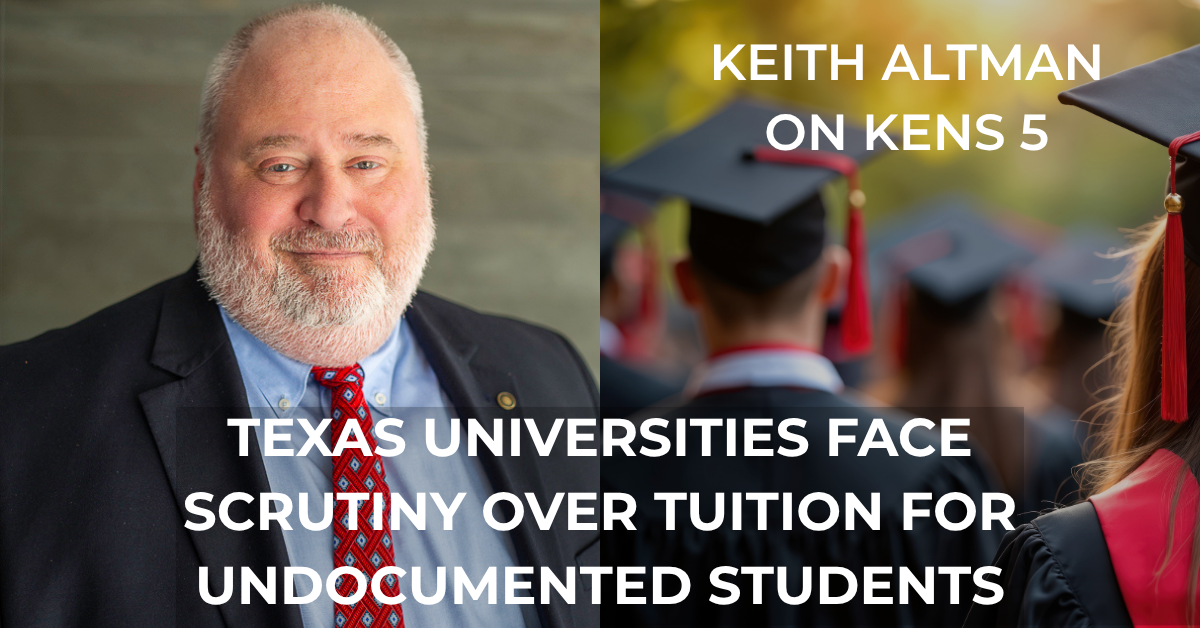Executive Overview
This section introduces the federal policy reversal initiated in early 2025 by the Trump Administration. It provides a snapshot of the legal rationale, contrasting responses, and how institutions are preparing to implement the shift. The goal is to set the stage for a deeper understanding of what the reinstated 2020 Title IX rule entails and why it has sparked debate.
In January 2025, the Trump Administration reasserted its education policy direction with the reinstatement of the 2020 Title IX regulations. This reversion was implemented through an executive order and a memorandum issued by the Department of Education, mandating immediate compliance with the 2020 regulatory framework. The move followed a federal court ruling that invalidated the Biden-era 2024 Title IX regulations, citing procedural overreach and inconsistencies with statutory interpretations.
The reinstated rule reflects a stricter constructionist interpretation of Title IX and repositions federal enforcement to emphasize procedural integrity, legal consistency, and due process. The Trump Administration has framed the decision as a restoration of fairness and legitimacy in campus adjudications. In contrast, civil rights groups and advocacy organizations have criticized the move as regressive, claiming it undercuts protections for survivors and marginalized communities.
Institutions have responded by preparing for a rapid policy shift, revising grievance procedures, and re-evaluating their compliance protocols. Campus-level implementation varies, but most institutions are working to ensure adherence to the reinstated legal standards while also preserving supplementary protections under separate policies.
Federal Reversion to 2020 Title IX Regulations
This section outlines the legal and procedural background behind the rollback to the 2020 regulations. It explains the rationale cited by the Trump Administration and the specific policy components being reinstated. The focus is on understanding how and why the regulatory pendulum has swung back.
Background and Legal Justification
The legal turning point came with a significant federal court decision in January 2025, which vacated the 2024 Title IX regulations enacted under the Biden Administration. The court ruled that the U.S. Department of Education had overstepped its statutory authority by broadening the scope of Title IX beyond what the law permitted, particularly in its efforts to include gender identity and sexual orientation within the definition of “sex discrimination.” Additionally, the court held that the Department failed to adhere to the formal notice-and-comment procedures required under the Administrative Procedure Act (APA), rendering the 2024 rule procedurally invalid.
In response, the Trump Administration acted swiftly to restore what it framed as the original legislative intent of Title IX. Within days of the court’s decision, a presidential executive order was issued mandating that all educational institutions receiving federal funds revert to the 2020 Title IX framework. This order emphasized strict adherence to biological sex classifications as the basis for determining sex discrimination under federal education law.
Further reinforcing this directive, the U.S. Department of Education released a formal guidance memo clarifying that Title IX would now be interpreted and enforced in alignment with the 2020 regulations, which had previously been introduced during Trump’s first term. These regulations emphasize due process protections for accused students, narrow the definition of sexual harassment, and reject the inclusion of gender identity as a protected category under Title IX. The memo also warned institutions that failure to comply with the revised interpretation could result in the loss of federal funding, heightening pressure on schools to revise their policies accordingly.
This shift marks a legal and ideological rollback, reinforcing a binary, biologically grounded understanding of sex in educational policy and sparking concern among civil rights advocates, LGBTQ+ organizations, and higher education institutions over its long-term implications.
Policy Features of the 2020 Title IX Rule
The 2020 Title IX regulations, first introduced during the Trump Administration’s previous term, significantly reshaped how sexual misconduct cases are handled on campus. These regulations narrowed the federal definition of sexual harassment, requiring conduct to be both severe and objectively offensive to qualify. They introduced the requirement of live hearings for postsecondary institutions, mandated cross-examination of parties and witnesses, and reinforced the presumption of innocence throughout the grievance process. Complaints that did not meet the heightened definition were to be dismissed under the Title IX framework, although institutions retained discretion to address them under other codes of conduct.
The rationale behind these changes centered on the restoration of due process protections and procedural fairness. The Trump Administration argued that the previous regulatory approaches had led to biased and opaque procedures, often resulting in unjust outcomes for the accused. At the same time, the regulations aimed to codify clear standards for addressing sexual misconduct, theoretically providing greater clarity and predictability for all parties involved.
Criticism from Equity and Advocacy Organizations
This section focuses on the backlash from civil rights organizations and education advocates. It details the perceived shortcomings of the 2020 rule, particularly in how it affects survivors, LGBTQ+ students, and students of color. The analysis provides insight into the broader equity concerns being raised by policy critics.
EdTrust’s Position and Concerns
Equity-focused organizations have been vocal in their opposition to the 2025 rollback. The Education Trust (EdTrust), a national advocacy group, issued a statement from Wil Del Pilar, Ph.D., describing the reinstated policy as one that “endangers women, girls, and survivors.” EdTrust contends that the rule undermines the original spirit of Title IX by narrowing protections and failing to consider the disproportionate impact on already marginalized student populations.
Specific Critiques from EdTrust
One of the central critiques from EdTrust is that the reinstated rule restricts the scope of gender equity. By enforcing Title IX solely on the basis of biological sex, the policy excludes protections for transgender and nonbinary students, a shift that activists describe as erasing the lived realities of LGBTQ+ communities. Additionally, the mandated live hearing and cross-examination process is seen as re-traumatizing for survivors, deterring them from coming forward and participating in adjudication processes.
EdTrust also points to the disregard for racial and gendered disparities in school discipline. Black, Latina, and Native American girls face a higher risk of exclusionary discipline and systemic school pushout. These issues, the organization argues, are ignored under the current Title IX framework, which does not address the intersectional nature of discrimination in educational settings.
Another major concern is the inconsistency in defending women’s rights. While the Administration frames its policy as protective of women, critics point out that it has failed to support reproductive rights, particularly in the post-Roe landscape. This selective approach, EdTrust contends, weakens the credibility of the pro-woman justification used to endorse the policy.
Recommendations by EdTrust
EdTrust calls for a renewed focus on survivor-centered protections and demands that educational policies be grounded in racial and gender justice. Their recommendations include expanding disciplinary equity, safeguarding reproductive health access, and prioritizing systemic reforms over ideological positioning. For EdTrust and similar organizations, the rollback represents not just a legal change, but a broader cultural and ethical failure to meet the needs of students in vulnerable communities.
Campus-Level Implementation and Reactions
This section explores how individual colleges and universities are responding to the Title IX changes. Through institutional case studies and legal perspectives, it reveals how schools are balancing compliance with community values and campus safety initiatives.
Institutional Adaptation: Duke University as a Case Study
In response to the policy shift, institutions have varied in their reactions and degree of adaptation. Duke University serves as an illustrative example. The university’s Title IX coordinator noted that minimal disruption is expected, as many elements of Duke’s existing procedures were already aligned with the 2020 standards. The institution is currently reviewing policies to ensure compliance, while also continuing to address non-Title IX conduct under parallel administrative codes. This dual-track approach allows schools to meet federal requirements without abandoning broader equity commitments.
Legal Perspective on Policy Shift
Legal scholars have also weighed in on the implications of the regulatory change. Professor Doriane Coleman of Duke Law described the shift as a return to a more legalistic model of campus adjudication. In her view, the 2020 regulations mirror civil legal proceedings more closely than educational or restorative approaches. The emphasis on procedural fairness, adversarial structure, and evidentiary standards reflects a deliberate departure from expansive protection models that emphasize survivor support over due process.
Ongoing Campus Support Measures
Despite reverting to the 2020 rule, institutions like Duke are continuing to invest in broader campus climate initiatives. The university has announced plans to conduct a new climate survey focused on student experiences with sexual misconduct. Furthermore, Duke retains the “preponderance of the evidence” standard in non-Title IX proceedings, which is generally considered more favorable to complainants than the “clear and convincing” standard. These decisions reflect a commitment to maintaining accessible pathways for redress while adhering to federal constraints.
Broader Political and Cultural Framing
This section addresses how the Trump Administration is presenting the policy reversal to the public and how it fits into larger cultural debates. It highlights the philosophical and political tensions driving the Title IX conversation.
Trump Administration’s Framing of Title IX Rollback
The Trump Administration has framed the reinstatement of the 2020 Title IX rule as a necessary correction to flawed enforcement practices. Public messaging has centered on themes of fairness, institutional accountability, and restoring trust in campus procedures. Officials have defended the policy as both pro-survivor and pro-due process, highlighting past Office for Civil Rights enforcement actions where procedural failures led to wrongful outcomes.
Policy Tensions and Cultural Divides
At the heart of the Title IX debate lies a set of unresolved cultural tensions. Supporters of the 2020 rule emphasize due process rights and procedural integrity, while critics argue that these priorities come at the expense of survivor safety and gender inclusivity. The regulation’s biological sex standard intensifies the divide, reflecting deeper disagreements about the role of gender identity in education policy. The broader narrative pits competing values—safety versus fairness, protection versus liberty, and inclusivity versus traditionalism—against each other in a contentious national dialogue.
Intersectional and Systemic Equity Issues
This section explores the broader structural consequences of reinstating the 2020 Title IX rule. It looks at how issues of racial justice, reproductive rights, and school discipline overlap with Title IX enforcement and reveals how a narrow focus on procedural compliance can obscure deeper inequities.
Racial and Gendered Disparities in Discipline
Many critics argue that the current Title IX framework overlooks the lived experiences of students who face both racial and gender-based discrimination. These students are not protected equally under policies that treat all cases as isolated incidents rather than outcomes of systemic bias.
- Black girls are suspended at rates five times higher than white girls. This is not due to higher rates of misbehavior but rather rooted in adultification bias. Educators often perceive Black girls as more aggressive, less innocent, and more disruptive. These racialized perceptions lead to harsher disciplinary outcomes for similar behaviors.
- Latina and Native girls experience different, yet equally harmful, patterns. Cultural misunderstandings, language differences, and stereotyping often lead to unfair punishment. For example, expressions of emotion or reluctance to engage in certain classroom dynamics may be labeled as disrespect or non-compliance.
- When Title IX focuses solely on formal grievance procedures, without addressing these contextual disparities, it fails to protect the most vulnerable students. The system becomes more accessible to those with social capital and legal literacy, while students of color continue to face punitive measures that remove them from educational spaces.
- This disconnect reinforces the school-to-prison pipeline. Instead of being supported, students are excluded, criminalized, or silenced. The absence of a trauma-informed, intersectional approach leaves serious gaps in protection and fairness.
Reproductive Justice and Title IX
Another major concern lies in the gap between Title IX protections and reproductive justice. Although Title IX prohibits discrimination based on pregnancy, it does not go far enough in protecting students who need access to reproductive care or accommodations.
- In states with restrictive abortion laws, students who are pregnant or seeking reproductive healthcare often face academic penalties or institutional neglect. Without guaranteed excused absences or confidentiality protocols, students may be forced to choose between their education and their health.
- Access to pregnancy-related accommodations varies widely across institutions. Some schools fail to provide clear policies or supportive services, leaving students to navigate stigma and systemic barriers alone.
- This lack of support affects students disproportionately. Those from low-income or marginalized backgrounds often do not have access to the resources or legal knowledge needed to advocate for themselves.
- Advocates for reproductive justice argue that Title IX must be redefined to include affirmative protections. This would mean ensuring not just the absence of discrimination, but the presence of safeguards that allow pregnant and parenting students to succeed academically, medically, and emotionally.
Implications and Path Forward
As institutions adjust to the Title IX reinstatement, they must prepare for both immediate and long-term shifts. This requires attention to compliance, equity, communication, and structural reform.
Short-Term Institutional Needs
Immediately, schools need to ensure that they meet federal expectations while minimizing confusion among students and staff.
- Internal audits should be conducted to identify gaps in compliance, especially around grievance procedures, documentation, and timelines.
- Updated training must be delivered to all Title IX coordinators, investigators, faculty, and staff. These sessions should include guidance on trauma-informed practices and cultural responsiveness.
- Support services must be reviewed to confirm that survivors have access to safe, confidential, and inclusive care. This includes mental health support, housing accommodations, academic flexibility, and legal referrals where needed.
- Clear communication plans should be implemented. Students and employees should receive updated information on their rights, the grievance process, and available resources. Translations and accessible formats should be prioritized to ensure all members of the campus community are informed.
Long-Term Policy Considerations
In the long run, institutions should move beyond compliance and adopt policies that reflect their values and the diverse needs of their communities.
- Schools should consider adopting stronger internal protections that exceed federal minimums. For example, expanding the scope of what counts as reportable misconduct or incorporating restorative justice processes.
- As legal interpretations continue to evolve, institutions must remain alert to future changes in legislation and court decisions. Staying engaged with advocacy networks and legal experts will be essential.
- State-level engagement can also make a significant difference. Where federal protections fall short, local and state advocacy may help advance policies that better support students’ rights.
- Ultimately, the goal should be to embed equity into the institution’s culture. This means recognizing Title IX not just as a legal obligation, but as a moral and educational commitment to create a safe, inclusive, and just learning environment for all.
Calls to Action
EdTrust and allied organizations continue to campaign for a reversal of the rollback and for a Title IX regime that reflects a more expansive vision of gender equity. They call on policymakers, educators, and community leaders to reject the binary framing of due process versus survivor protection, and instead to pursue solutions that uphold both. The path forward, they argue, requires intentional policy design that centers marginalized voices, invests in education-based solutions, and moves beyond the polarized rhetoric of the culture wars.
Conclusion
This final section synthesizes the legal, cultural, and institutional implications of the policy shift. It reflects on how Title IX continues to serve as a battleground for defining civil rights in education.
The reinstatement of the 2020 Title IX rule marks a significant inflection point in the federal approach to campus sexual misconduct. While the Trump Administration emphasizes procedural fairness and legal consistency, critics view the policy as exclusionary and insufficiently responsive to the complex realities of educational equity. The resulting tension illustrates a broader societal debate over gender, justice, and the future of civil rights in education. For institutions, the challenge lies in navigating this ideological divide while remaining steadfast in their commitment to creating safe, inclusive, and lawful learning environments.




